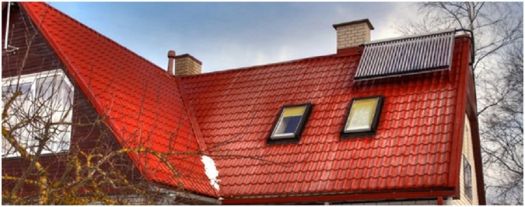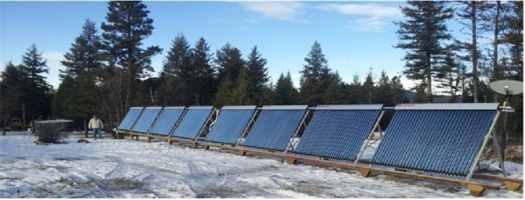Are you looking for a perfect way to
harness solar energy? If so, then solar water heaters can be ideal for
your residential applications. Even solar water heating systems can be
used year-round. With the advanced vacuum tube solar collectors, a solar
water heater can work in temperatures of minus 40.

Solar water heating systems in Canada
and the Northern USA are available with a closed-loop or an active
solar water system. This kit design is based on the requirement for a
glycol-based heating fluid that won’t freeze during the winter months.
In the southern regions, the drain back
system or compact solar water heaters can be utilized when the risk of
freeze damage is reduced. When the heavy freezing occurs, it’s wise to
be safe and protect the system with a heating fluid that can withstand
temperatures below 0C.
Northern Lights solar water heating
systems use specialized solar glycol heating fluid to work in arctic
temperatures. They can withstand high temperatures of up to 480F. The
solar collectors absorb the heat, which moves into a solar water tank.
There’s an internal heat exchanger
present at the bottom part of the solar water tank. After that, the heat
energy will be transferred into the house to use for hot water. If not
used, it is stored in the heavily insulated solar tank.
A solar differential controller and a
pump control the entire heating loop. The controller helps in improving
the performance of solar systems. All you have to do is to switch on or
off the heat pump as required.
Investing in Residential Solar Water Heaters
Every home is unique, and the size of the
house, its climate, and insulation value will play a key role in
choosing the right solar heater. The larger the system is, the more
storage will be required. Generally, 30 tubes solar vacuum collectors
are recommended for every 300 square feet in Northern climates. But 20
tubes solar vacuum collectors can be ideal for every 400 square feet in
warmer climates.
However, it’s suggested to maintain the
proper size of the storage tank to match the number of solar collectors.
The more is better when it comes to choosing the size of storage. Most
solar tanks are available in 50, 80, and 119 gallons. If you have large
homes, then you can add multiple storage tanks and run them in parallel.
How Do You Maintain the Size of Solar Water Heating System?
Every home is different based on the
occupancies and the occupants. The shower using frequency plays an
integral part in the amount of hot water a home consumes on an average.
Every occupant consumes an average amount of 20 gallons of hot water
every day. So, a family of four people will require 80 gallons of hot
water.
Bottom Line –
When it comes to installing solar water
heaters, you should look no further than 123 Zero Energy. Our solar
water heating kits are built around vacuum tube solar collectors,
ensuring maximum efficiency and optimal performance for more years to
come. To learn more about our solar water heaters, feel free to visit our website at https://www.123zeroenergy.com/solar-hot-water-heaters.html .
